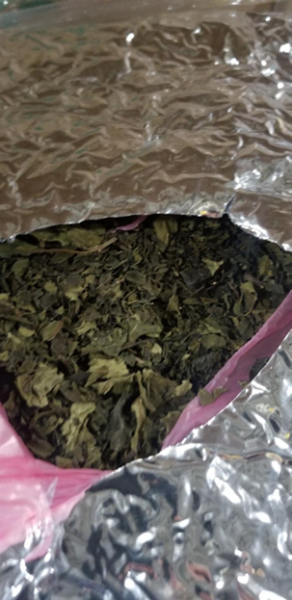NEWARK, N.J. — You probably have never heard of Khat, good thing U. S. Customs and Border Protection officers at the Port of New York/Newark are quite familiar with this stimulant.

New York/Newark.
On June 03, CBP officers at the Port of New York/Newark conducted an exam on a container that appeared to contain Khat. Samples were extracted from the container and confirmed the next day by Animal and Plant Health Inspection Service (APHIS) of the United Stated Department of Agriculture (USDA) as Khat. In total 10,685 lbs. of Khat was seized, the shipment was manifested as 90 pieces of peppermint matcha tea leaves from Kenya and destined to Minnesota.
Just four days later, CBP officers conducted an exam on a container that appeared to contain Khat. Samples were extracted from the container and confirmed the next day by Animal and Plant Health Inspection Service (APHIS) of the United Stated Department of Agriculture (USDA) as Khat. In total 2,969 lbs. of Khat was seized, the shipment was manifested as 119 pieces of herbal foot soak from, South Africa and destined to Pennsylvania.
CBP officers at the Port of New York/Newark seized a total of 13,654 lbs. of Khat with an estimated street value of $3.8M.
“These khat seizures demonstrates Customs and Border Protection officers’ effectiveness at searching through the haystack of tens of thousands of international containers to find the proverbial needle of illicit contraband,” said Marty Raybon, CBP’s Acting Director for the New York Field Office. “Khat remains illegal to import into the United States and so CBP officers will continue to seize khat when we encounter it. Drug interdiction at our nation’s borders is one way in which CBP helps to keep our communities safe.”
CBP officers seized the Khat for proper storage pending destruction as they continue to work with Homeland Security Investigations (HSI) who are investigating these seizures.
Khat is a green, leafy plant typically grown in the Arabian Peninsula and many parts of Africa. It is chewed for its stimulant effect. The World Health Organization classified khat as a drug of abuse in 1980.
The Drug Enforcement Administration classifies khat as a schedule 1 narcotic – the most restrictive category used by the DEA – when the leaves are freshly picked. Its principal components, cathine and cathinone, are considered controlled substances in the United States.
CBP routinely conducts random inspections operations on international passengers and cargo and searches for narcotics, unreported currency, weapons, prohibited agriculture, and other illicit products.
On a typical day, CBP seizes more than 3,677 pounds of illicit drugs along our nation’s borders. Learn more about what CBP's accomplishes in "A Typical Day."
Please visit CBP Ports of Entry to learn how CBP Field Operations secures our nation’s borders.


